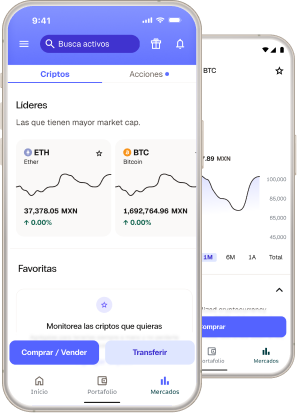Almost every crypto investor seeks the same thing: exciting, high returns. But on this journey, the skies are not always clear. In case you’re not yet seeing the expected returns on your portfolio, there are a few things to take into consideration.
How do short-term and long-term work in crypto?
Crypto as an asset has two sides: While it can yield high returns over time, it is also expected to be volatile in the short term. Usually, people who make big profits right away are either very lucky, or professional traders who do it for a living, which involves monitoring the market constantly to buy low and sell for a profit, on a daily basis.
A typical short-term behavior for your returns will include ups and downs; sometimes there are more ups, sometimes more downs, depending on market conditions. As more time passes, your chances of seeing better returns may increase. Here’s a chart that illustrates the behavior of crypto over time.

What to do?
Considering this, what are some things investors usually do?
- You only realize a loss when you sell the asset you’ve invested in. So, staying invested is usually the best approach.
- If your returns are negative, it means the price of the asset is lower than what you paid for it. So, if you have more money to invest, this can be seen as an opportunity to buy more and lower your average buying price.
- Build a habit and maintain consistency in your investments. A well-known strategy is to invest regularly in an asset rather than making a one-time purchase. If you invest in bitcoin, for instance, every month for five years, there will be months when its price is higher and others when it’s lower. In the long run, you will have paid an average price of bitcoin over those years, and by the end of this period, it’s more likely that your investment will be profitable.
- Splitting your investments across different assets helps mitigate risks and increase potential returns. It’s called diversifying and it’s a very common approach taken by investors. Explore your options for diversification to create a more solid and protected portfolio.
Now that you understand how to handle short-term downturns, it’s time to start defining your investment strategy. Remember, keeping emotions out of your investment decisions and consistently monitoring your progress will help you stay on track with your long-term objectives.

